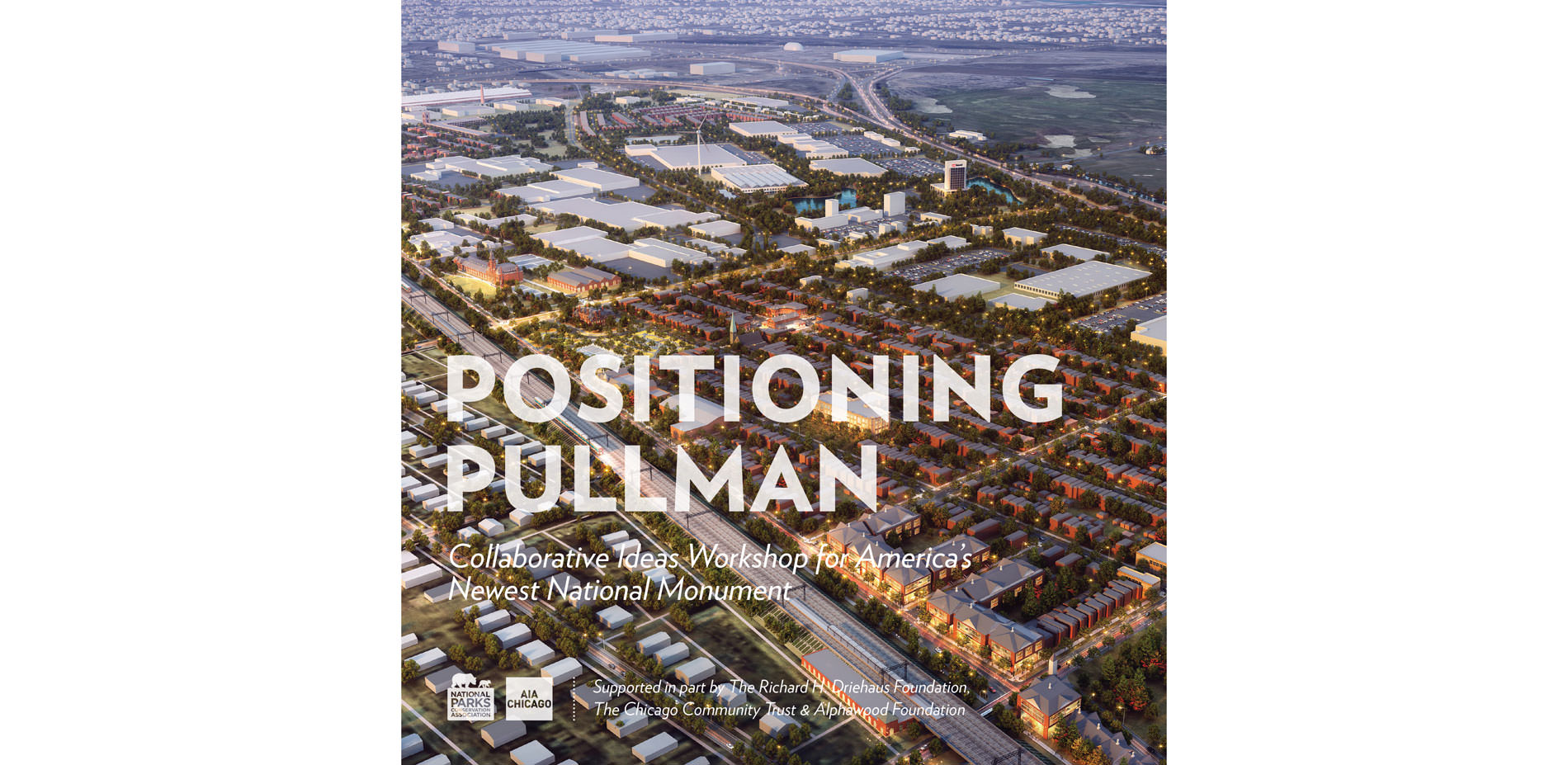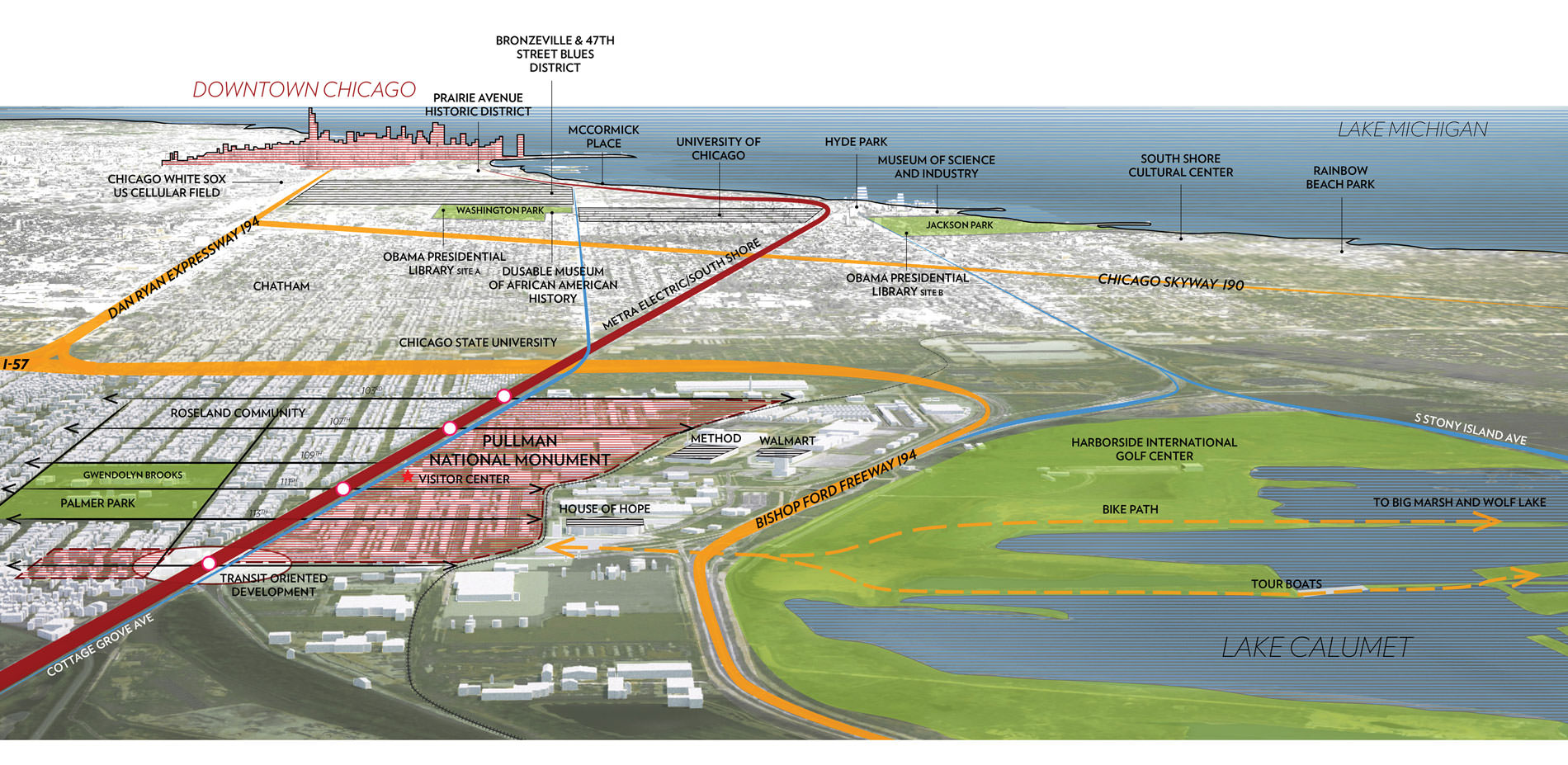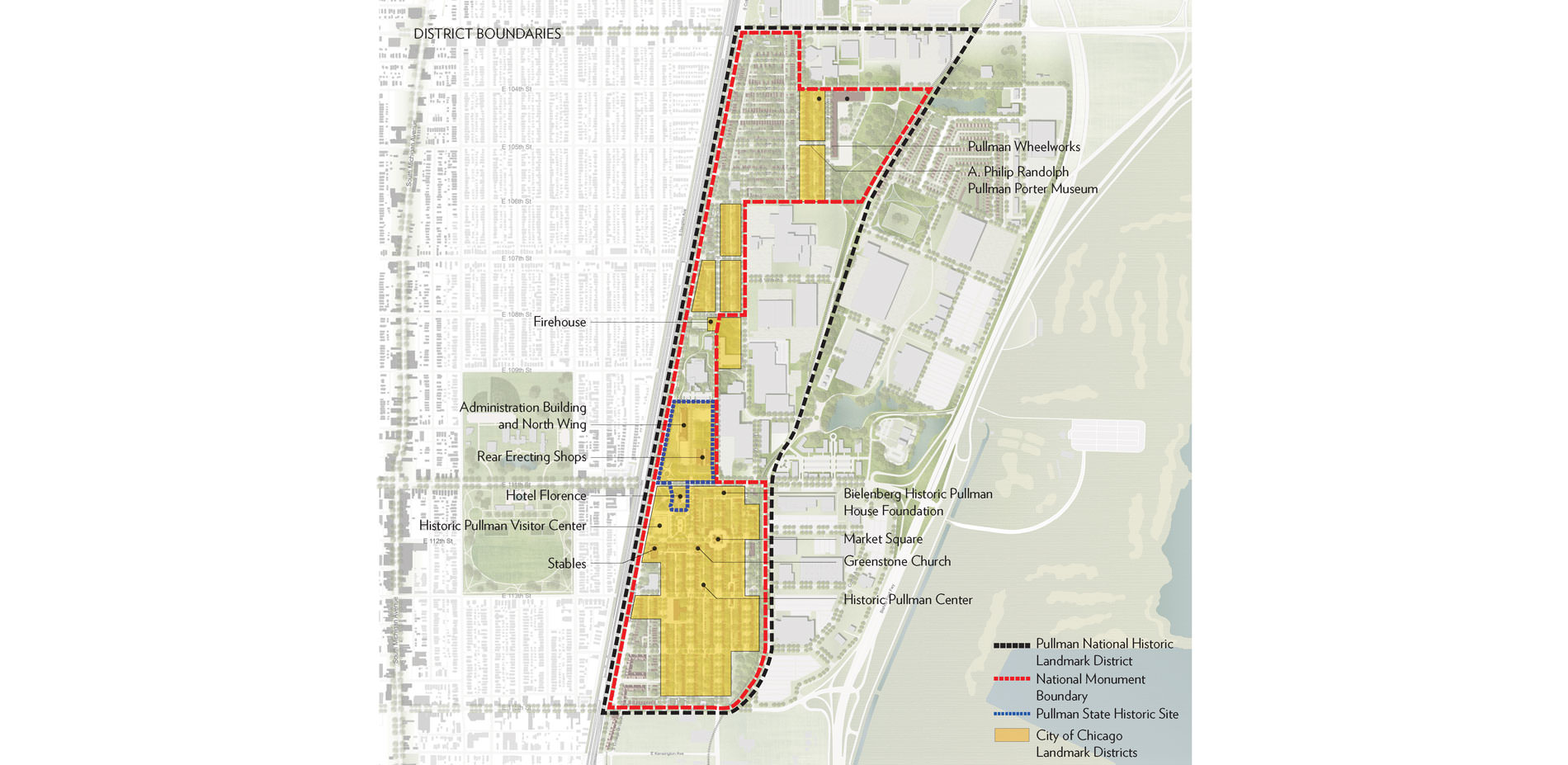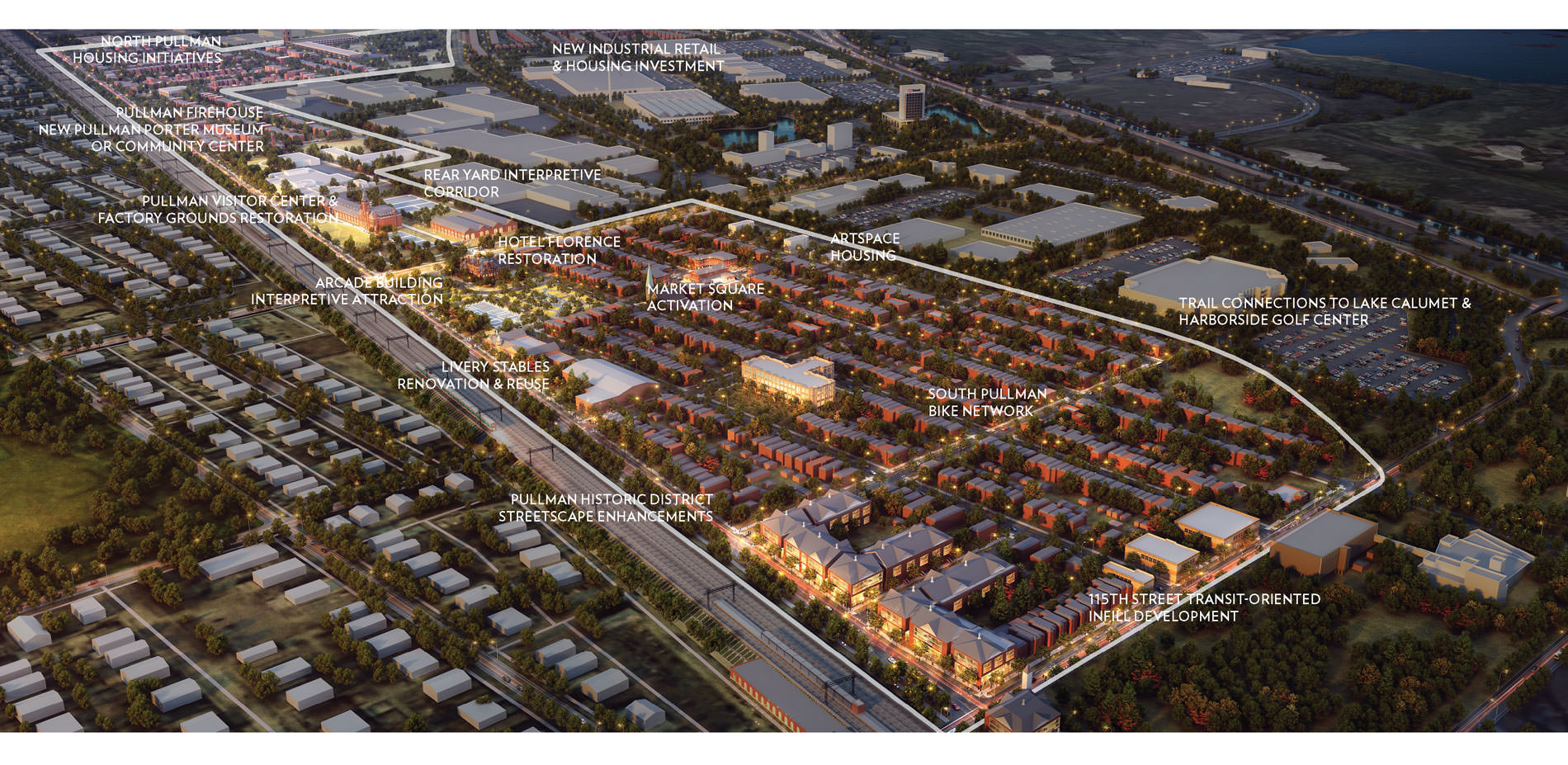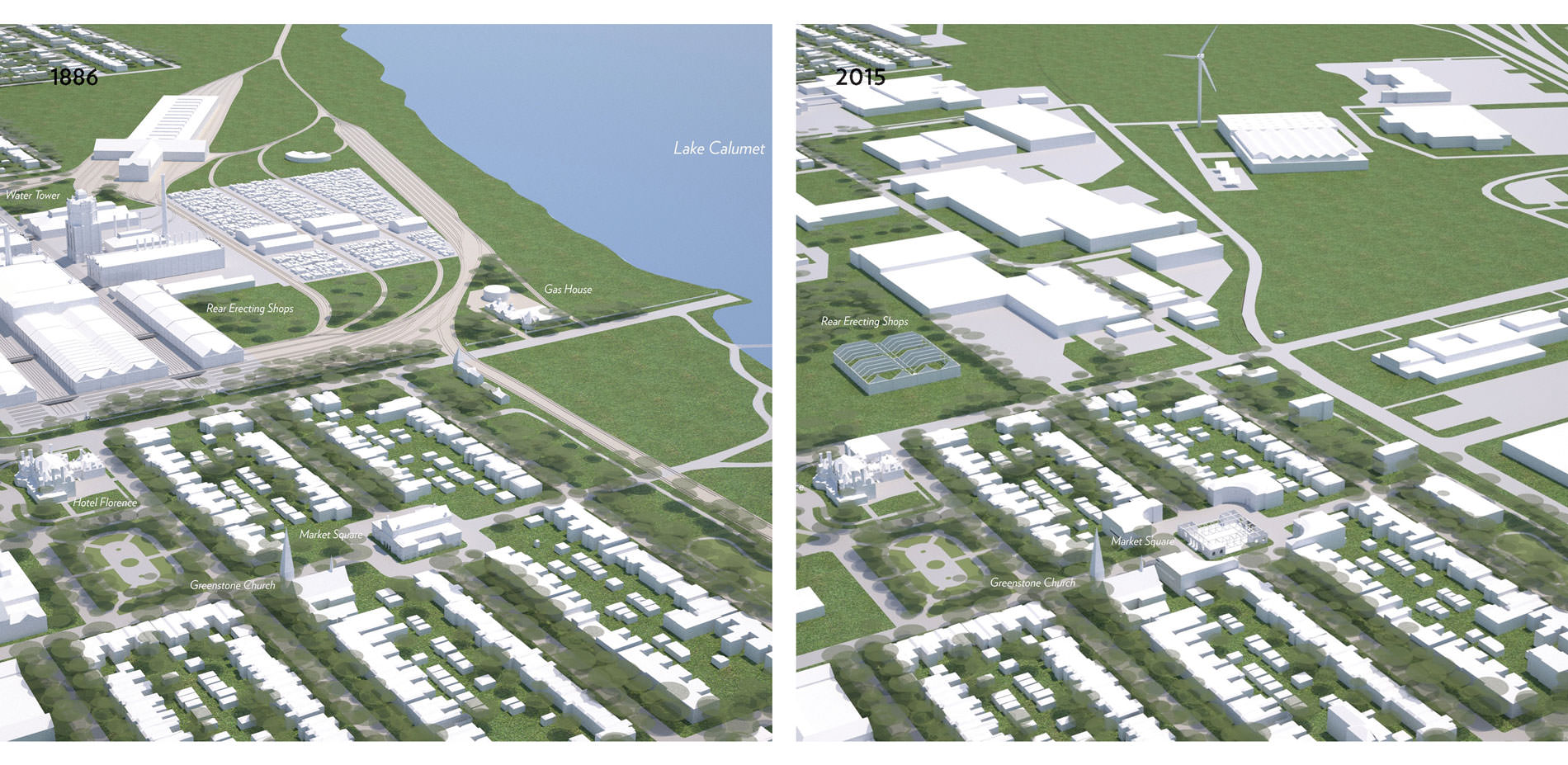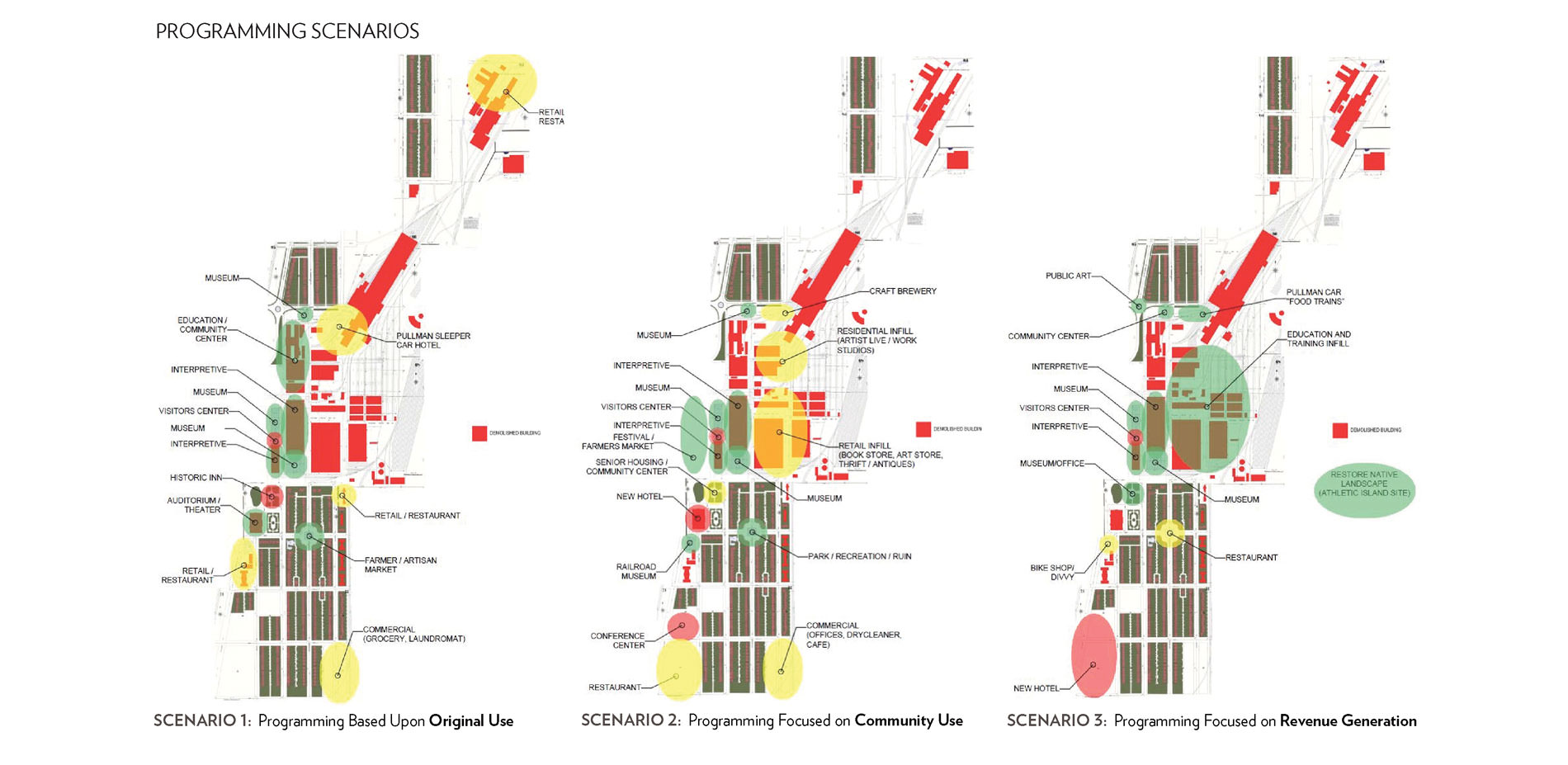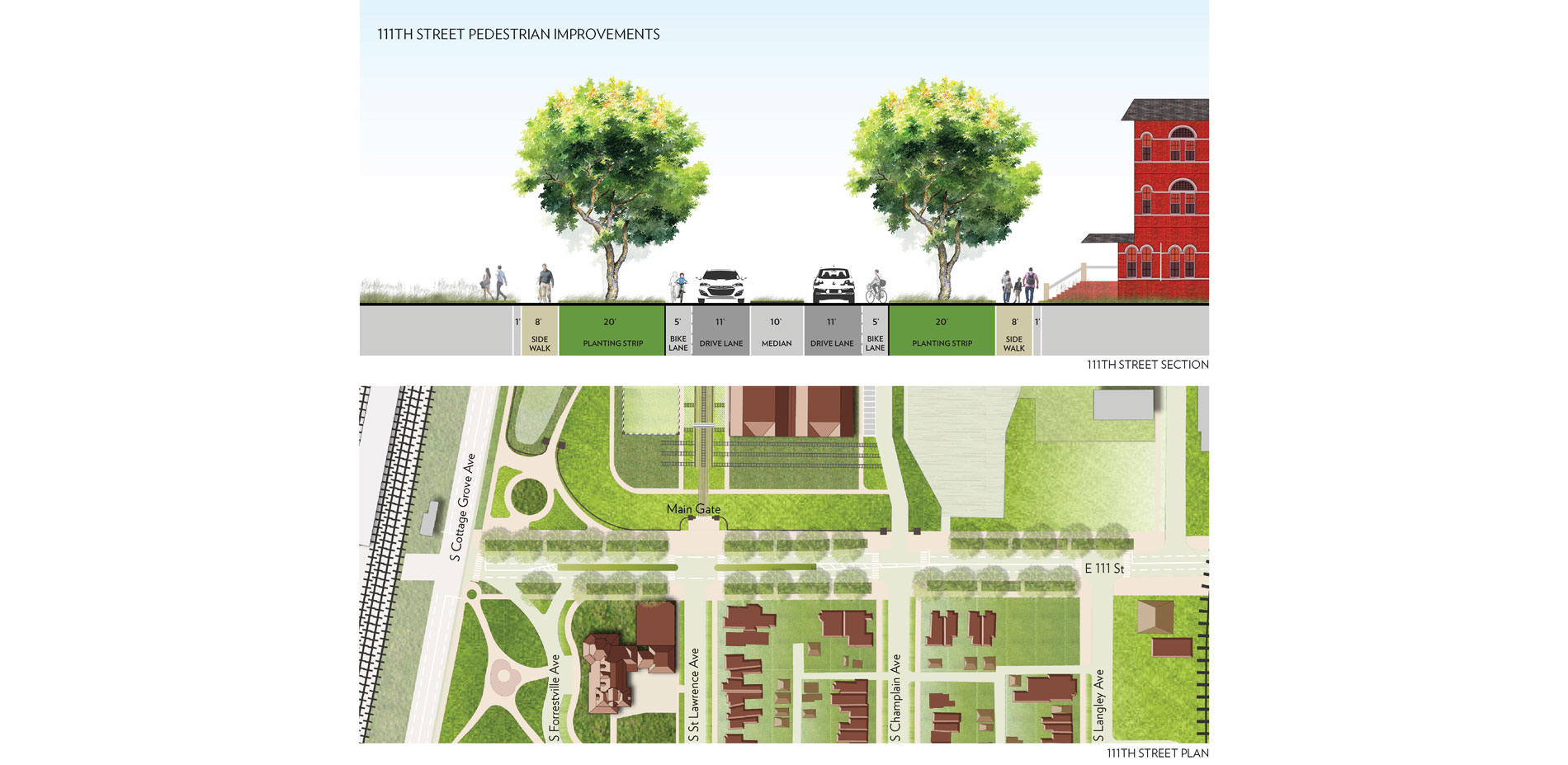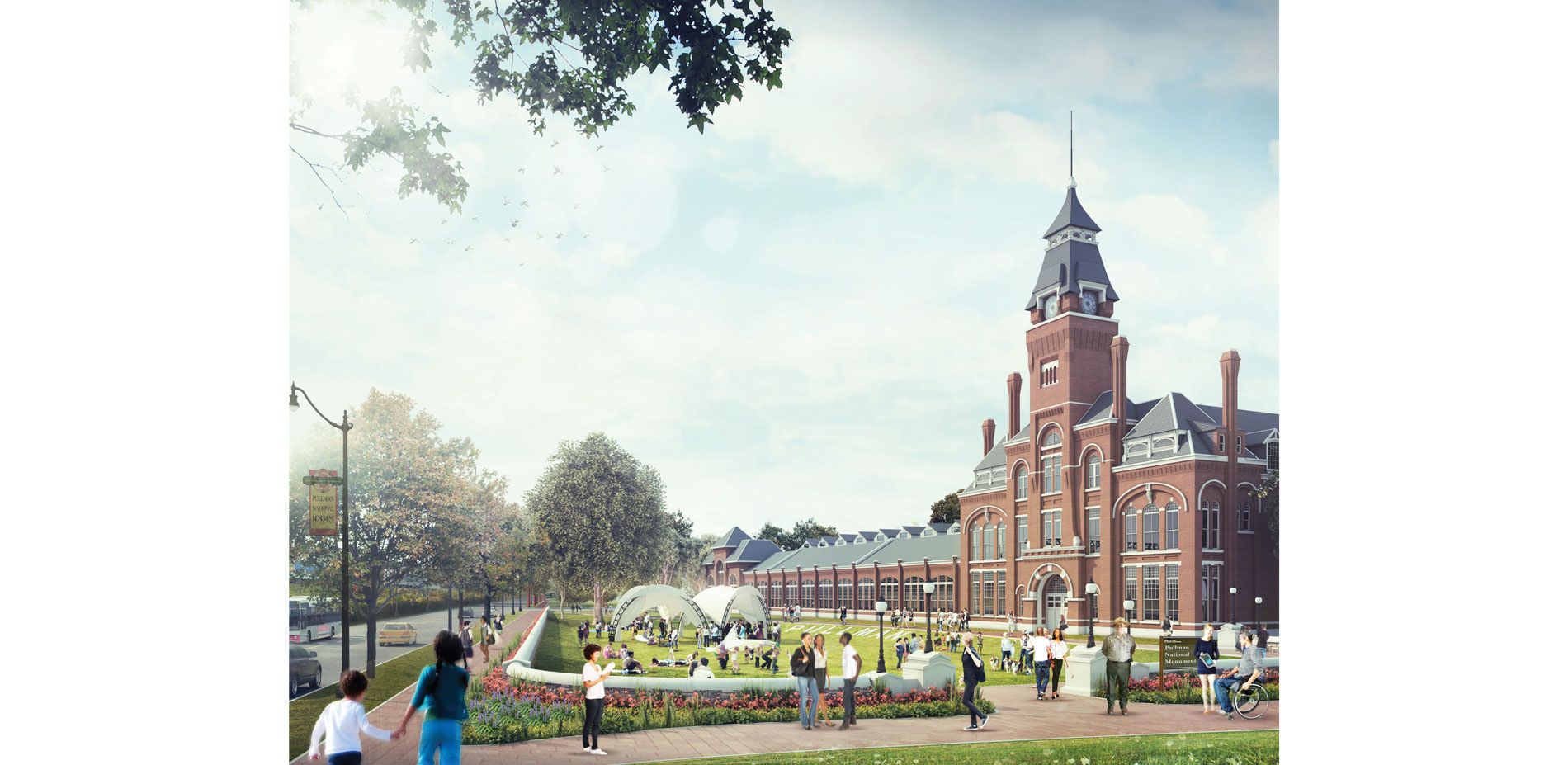Positioning Pullman
Honor
Analysis and Planning
Chicago, IL, USA | site | Client: National Parks Conservation Association
Shows what to do to revitalize an historic African-American community that has taken a hit.
- 2017 Awards Jury
PROJECT CREDITS
Lead Designer
- Adrian Smith + Gordon Gill Architecture
Additional Project Credits
- Smith Group
- Studio Gang
- Bauer Latoza Studio
- McGuire Igleski Associates
- Altus Works, Brush Architects
- Moody Nolan
- Farr Associates
- Griskelis Young Harrell
- Ross Barney Architects
- Christopher Burke Engineering
- TYLin
- Jacobs
- Sam Schwartz Engineering
- Market & Feasibility Advisors
PROJECT STATEMENT
Designated a national monument by President Obama in February 2015, Pullman is a treasure of Chicago’s south side. In its heyday as a manufacturing town, Pullman provided the setting for the evolution of industry and transportation, achievements in planning, architecture, and landscape architecture, the foundation of labor law, and the advancement of civil liberties for African Americans.
On the heels of the Pullman’s national designation, AIA Chicago and the National Parks Conservation Association conducted a three-day “collaborative ideas workshop.” The purpose of the workshop was to engage the public and the design community regarding opportunities to leverage the new national designation to enhance visitor experience and advance community development goals. The workshop focused on four topics: park experience; historic preservation / adaptive reuse; access and connections; and, community development.
The culmination of thousands of volunteer hours, the Positioning Pullman document provides a clear and exciting vision for the future of the national monument that seeks to share stories of innovation from the 19th Century and demonstrate 21st Century best practices for neighborhood and building development.
PROJECT NARRATIVE
Pullman National Monument is a must-see treasure of Chicago’s South Side. In its heyday as a company-town, Pullman provided the setting for the evolution of industrial manufacturing and railroad transportation, achievements in town planning, architecture and landscape architecture, the foundation of US labor law, and the advancement of civil liberties for African Americans.
The circa-1880 town of Pullman is now a diverse and vibrant Chicago neighborhood with a reputation for strong preservation advocacy. In 1960, when the neighborhood was slated to be turned into an industrial park, residents banded together to prevent destruction of the community’s historic fabric. As a result, Pullman became a National Historic Landmark District in 1970. Two years later, the City of Chicago designated the southern part of the neighborhood a city landmark district.
In February 2015, Pullman was designated a National Monument by President Barack Obama. Pullman National Monument is one of the first “National Urban Parks” in America. It is an important development for the National Park Service as it enters its second century of stewardship with a focus on an “Urban Agenda.” As such, lessons learned at Pullman could shape policy over the course of the next 100 years.
As it evolves into a National Park Service site, there are many questions about how this city neighborhood will accommodate visitation, which is anticipated to grow to 300,000 people per year. In an effort to start addressing some of these questions, AIA Chicago and the National Parks Conservation Association (NPCA), with support from The Richard H. Driehaus Foundation, The Chicago Community Trust, and Alphawood Foundation conducted a three-day community design workshop in April 2015. The purpose of the workshop was to engage the public in discussions with the Chicago design community regarding opportunities for enhancing the park visitor experience while leveraging the new national designation to advance important community development goals.
The workshop was facilitated by a technical team of 40 volunteer architects, landscape architects, city planners, economists, and engineers, who assembled to work with Pullman stakeholders to develop a roadmap for improvement and operations. Discussion was organized around four topics: park experience; historic preservation and adaptive reuse; access and connections; and community development. Input was collected from the over 500 diverse and committed stakeholders who attended the events.
Following the workshop, the technical team refined the material and identified 35 unique projects to improve the visitor experience and support community development goals, all based on the feedback received from stakeholders. Recommended projects seek to share stories of innovation from the 19th Century, while also demonstrating 21st Century best practices for neighborhood, site, and building development, including:
Energy Reduction
Restoration and infill projects in Pullman are envisioned to include a comprehensive set of passive design measures coupled with high performance building technologies. Many passive features are already incorporated into the historic fabric of the community. These include buildings with large operable windows to enable light penetration and cross ventilation with protection from overhanging eaves. Streets and public spaces contain an abundance of old growth canopy trees that mitigate heat island effects and reduce building cooling needs. All replacement windows, doors, insulation and mechanical systems will meet or exceed the Chicago Energy Conservation Code.
The Pullman Factory Complex is also envisioned to incorporate solar collectors, wind turbines, and rainwater harvesting features that reduce environmental impacts while also serving as educational features.
Integrated Design
Positioning Pullman is a demonstration project for integrated design. All project recommendations were developed collaboratively between diverse architects, landscape architects, civil engineers, and transportation engineers to assure coordination and to maximize efficiency.
Carbon Reduction
The largest contribution to carbon reduction results from recommendations regarding infrastructure and management strategies to enable pedestrian-friendly walking and biking visitation. Recommendations address improvements to commuter train stations (Metra) and a restored connection to the South Shore rail service with linkage to the nearby Indiana Dunes National Lakeshore; a comprehensive bike network with bike comfort stations, clearly marked bike lanes, and wayfinding signage; and strategies for visitors arriving via car to park once and then transition to foot or bike.
Community Contribution
A key goal of the Positioning Pullman initiative is the identification of opportunities to leverage the national designation to advance important community development needs. Specifically, the increase in visitation presents opportunities to grow new businesses and employment opportunities, as well as benefit from new investments in infrastructure and public transportation.
In addition, all improvements within the Pullman National Monument will adhere to the Secretary of the Interior's Standards for the Treatment of Historic Properties and are envisioned to achieve a minimum of LEED gold certification.
To assist with implementation planning, the technical team prepared cost estimates, implementation responsibilities, and a comprehensive vision document entitled Positioning Pullman. The document incorporates input from the more than 500 community participants and each of the 40 volunteer professionals, and emphasizes the need for a continued collaborative effort to move forward. Because of the interest of so many dedicated partners, the outlook for the future of Pullman is very positive. The Positioning Pullman document is now being used by the National Park Service and its partners, including the State of Illinois, the City of Chicago, local transportation agencies, neighborhood advocacy groups, as well as private sector stakeholders, to move forward. Implementation of a number of the recommended initiatives, including the Visitor Center, is already underway. Since its completion, Positioning Pullman and the integrated visioning process has become a model for planning and developing other National Park Service sites.
